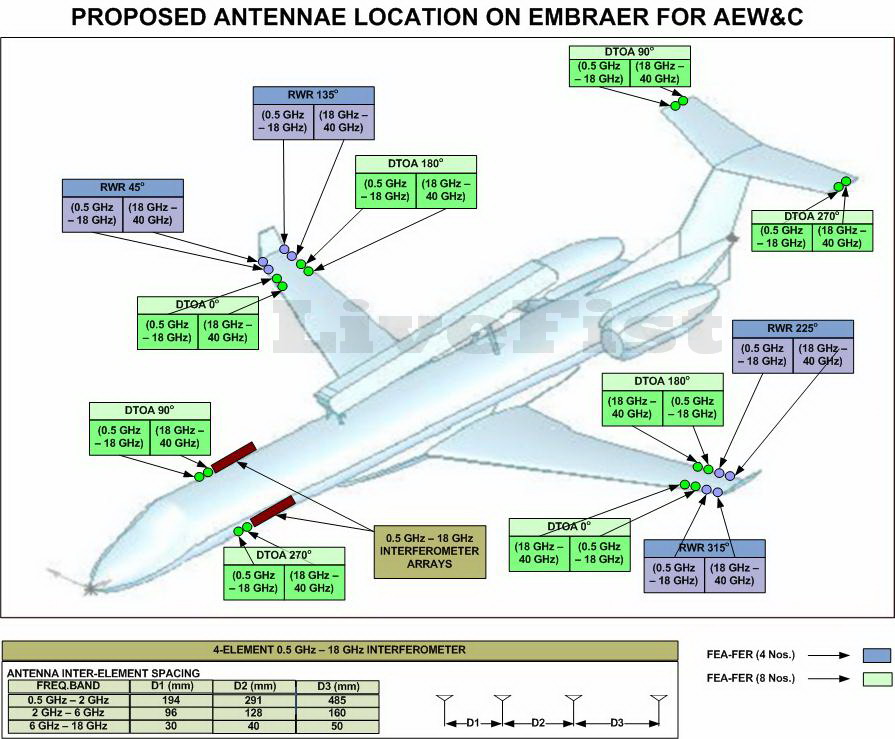http://livefist.blogspot.com/2011/11/first-flight-of-indias-aew-aircraft.html
first-flight-of-indias-aew-aircraft
Early next month, India's own AEW&C platform makes its debut flight. The first of three modified EMB-145 platforms will begin a schedule of flights to validate performance and handling. As reported on Livefist earlier, the start-up flight tests will be carried out in Brazil by Embraer and a team from the Indian Air Force's Aircraft & Systems Testing Establishment (ASTE) in association with Brazil's Agência Nacional de Aviação Civil and India's CEMILAC.
The first flight test aircraft, scheduled to make its first flight next month (sources say there have been unspecified delays of ), is complete with Dorsal Unit (DoU) containing dummy electronics, ECS, IFR, auxiliary power units, internal fuel tanks, SATCOMs and antennae. India's Centre for Airborne Systems (CABS) -- the laboratory spearheading the programme -- supplied Embraer with the dorsal unit (with dummy electronics) and the Ku-band SATCOM dome, while the Defence Avionics Research Establishment (DARE), CABS and the Defence Electronics Research Laboratory (DLRL) supplied in antennae for ESM, CSM and U/VHF.
While the EMB-145 with the configuration above will undergo flight tests in Brazil, the configuration for ferry to India a few months later will be the aircraft with only the dorsal pylon (minus the actual unit), ECS, IFR, APUs and internal fuel tanks.
Once the first aircraft reaches India sometime next year, it will undergo a rigorous flight testing schedule by CABS, ASTE and CEMILAC in association with Embraer. After a few flights in India, the aircraft will be integrated with a dorsal unit with real electronics and other mission system equipment, including operator workstations (five), avionics racks, rest crew seating, seats and cabling.
On June 23 last year, EADS Defence & Security (now Cassidian) announced that it had been awarded a contract to supply consultancy services to CABS for developing the AEW&C's system architecture with particular regard to certification and mission equipment optimisation.












